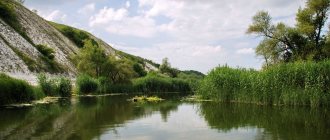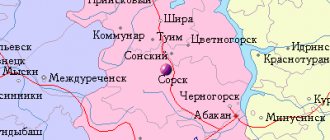Urban village in Dagestan, Russia
| Beliji Beliji | |
| Urban settlement[1] | |
| Location of Beliji | |
| Beliji Location of Beliji Show map of Russia Beliji Belidzhi (Republic of Dagestan) Show map of the Republic of Dagestan | |
| Coordinates: 41°53′N 48°24'E / 41.883°N W. 48.400 ° E. / 41.883; 48.400Coordinates: 41°53′N 48°24'E / 41.883°N W. 48.400 ° E. / 41.883; 48.400 | |
| A country | Russia |
| Federal subject | Dagestan[1] |
| Administrative region | Derbent district[1] |
| Settlement | Belidzhi village[2] |
| Based | 1899 |
| Urban settlement status with | 1965 |
| population (2010 Census)[3] | |
| • General | 12,236 |
| • Evaluate (2018)[4] | 11,251 (-8.1%) |
| Administrative status | |
| • Capital from | Belidzhi village |
| Municipal status | |
| • Municipal district | Derbent municipal district[5] |
| • Urban village | Town Belidzhi[5] |
| • Capital from | Town Belidzhi[6] |
| Timezone | UTC + 3 (MSK [7]) |
| Postal code(s)[8] | 368615 |
| OKTMO I WOULD | 82620155051 |
Beliji population
| 2010 Census | 12,236[3] |
| 2002 Census | 11,584[9] |
| 1989 Census | 10,835[10] |
| 1979 Census | 10,041[11] |
Beliji
(Russian: Belidzhi) is an urban locality (an urban settlement) in the Derbent District of the Republic of Dagestan, Russia. As of the 2010 Census, its population was 12,236.[3]
Population[ | ]
| Population | ||||||
| 1926[4] | 1939[5] | 1970[6] | 1989[7] | 2002[8] | 2010[9] | 2012[10] |
| 439 | ↗577 | ↗1630 | ↗2771 | ↗3434 | ↗4282 | ↗4395 |
| 2013[11] | 2014[12] | 2015[13] | 2016[14] | 2017[15] | 2018[16] | 2019[1] |
| ↗4453 | ↗4490 | ↗4552 | ↗4617 | ↗4654 | ↗4693 | ↗4696 |
According to the materials of the All-Union Population Census of 1926 for the Dagestan Autonomous Soviet Socialist Republic, in the village of Belidzhi of the Belidzhinsky village council of the Derbent district lived: Turks (Azerbaijanis) - 339 people (94 households), Lezgins - 77 people (24 households), Russians - 8 people (3 households) , Kumyks - 5 people (1 household), Persians - 5 people (1 household) and Mountain Jews - 5 people (1 household)[17].
National composition
According to the results of the 2010 All-Russian Population Census[18]:
| № | Nationality | Number of people, people | Share |
| 1 | Azerbaijanis | 3239 | 75,6 % |
| 2 | Tabasarans | 812 | 19,0 % |
| 3 | Lezgins | 187 | 4,4 % |
| 4 | other | 44 | 1,0 % |
Will Dagestan Belidzhi follow in the footsteps of Ingush Sunzha?
Recently, in the Ingush urban settlement of Sunzha, a referendum was held to give it the status of a city. 78% of residents voted for a positive solution to the issue.
Now the People's Assembly of the youngest republic of the Russian Federation is trying to approve its results. After this, a new city will appear on the map, and quite a large one - 64.5 thousand people according to data for the current year.
In general, Sunzha is a very remarkable settlement. It traces its current history back to the village of Sunzhenskaya, which arose on the lands of previously existing Ingush settlements in 1845. Then it was renamed Sleptsovskaya, and in Soviet times - Ordzhonikidzevskaya.
Village-giant
But this village was famous for being the largest rural settlement in Russia. In this status, its official number reached 70 thousand people. In 2015, the parliament of Ingushetia transformed the village into an urban settlement, and it again turned out to be the largest in this status.
Already this year, after the order of Russian Prime Minister Dmitry Medvedev, the village changed its name and became known as Sunzha. Of course, all these changes are justified, since Ordzhonikidzevskaya looked like a sort of overgrowth even against the background of other settlements that do not have city status, with the exception of one or two, not exceeding 40 thousand in population.
Second in Ingushetia
In truth, the real population of Sunzha is a quarter, or even a third less than the official one, if we take into account the inflated figures for the entire republic. More than 50 thousand people have never lived in it. But even in this case, it still retained the status of the largest village and rural settlement, and also remained the second largest populated area in Ingushetia after Nazran, ahead of three other cities.
Now the status of Sunzha will correspond to those republican institutions that are located in it - the Ingush State University, founded in it (now some buildings remain here), the National Library of Ingushetia, etc.
Road junction
Unlike Sunzha, the village of Belidzhi in the south of Dagestan, which became the most important transport hub almost immediately after its establishment in 1899, cannot boast of the attention of the authorities. But with his appearance he connected almost all of present-day Yuzhdag with the rest of the Russian Empire. Even in postal items, Belidzhi station was indicated for a long time as a transfer point.
The young settlement grew quickly, becoming an urban-type settlement in Soviet times (1965). Its growth continued in post-Soviet times. At one time, the question of separating the Belidzhinsky district from the Derbent district was even raised.
Growth or decline?
But according to the statistics, the rapid growth of the village is not at all visible. The number of Beliji stopped at 12 thousand, and since 2010 it began to decline altogether. Of course, the difficult economic situation has forced many Belijin residents since the 90s to independently resolve employment issues by traveling outside the village. A large canning factory, which produced 19 million conventional cans per year of various products from fruit and vegetable raw materials, stopped working, and many residents became unemployed.
But enterprising Belidzhi residents were not at a loss in the new conditions and even found their niche - pickles from Belidzhi are known throughout Russia. There were few people who left for good; seasonal migration predominates. But there were many who moved to the village, including refugees from Novy Uzen, as well as villagers from the Lezgin districts of Yuzhdag.
Looks like a city, but still a village
Some positive changes are created mainly by the residents themselves, despite the indifference on the part of the district and republican authorities. And the converted cannery should soon be operating at full capacity again.
Now in the village there are 5 schools, one gymnasium, a branch of one of the Dagestan universities, and there are many additional education institutions. The presence of so many social infrastructure facilities is more typical for small cities than for villages.
And everyone knows that the population in the village of Belidzhi is greatly underestimated. Only the estimates are different - from 14 to 40 thousand. Most likely, the population of Belij is approximately 20 thousand people. This, on the one hand, corresponds to the average small town, but on the other hand, this number is already too large for a village.
Meanwhile, the status of a city would allow Belidzhi to realize its hidden potential and become another, along with Derbent, growth pole for Southern Dagestan. And new opportunities would revitalize not only Beliji, but also the entire border area surrounding it. The Belijians themselves understand this, but they do not realize it in Makhachkala, and the leadership of the Derbent region is not at all interested in such a development prospect.
Rasul Rashidov
For calls, SMS messages, sending photos and videos via WhatsApp: +79634201548 E-mail
RIA "Derbent" in
- Next publication A new agency has been created in Dagestan - “Dagestan Property”
- Previous publication Movements in the “Ministry of Culture case” will reach Derbent
- Who is restless in Urqaraja on the eve of the elections?
- In cooperation with all of Russia: Dagestan is updating its permanent representative offices in the regions of the country
- A strategic session “Development of tourist routes and points of attraction” was held in the Suleiman-Stalsky district
- Rural tourism can become a new economic and social driver for the development of the Suleiman-Stal district
- Investments in the Derbent SES are “a huge credit of trust to our republic”
- “We were able to largely reverse the negative attitude towards vaccination”
Subscribe to RIA Derbent on social networks:
Notes[ | ]
- ↑ 12
Population of the Russian Federation by municipalities as of January 1, 2022 (Russian). Retrieved July 31, 2019. Archived May 2, 2022. - Law of the Republic of Dagestan of January 13, 2005 No. 6 “On the status and boundaries of municipalities of the Republic of Dagestan”
- UNIFIED REGISTER OF ADMINISTRATIVE-TERRITORIAL UNITS OF THE REPUBLIC OF DAGESTAN. 2007
- Zoned Dagestan: (administrative and economic division of the DSSR according to the new zoning of 1929). — Makhachkala: Orgotd. Central Executive Committee of the DSSR, 1930. - 56, XXIV, 114 p.
- List of populated places indicating the population according to the 1939 census for the Dagestan Autonomous Soviet Socialist Republic. - Makhachkala, 1940. - 192 p.
- Composition of populated areas of the Dagestan Autonomous Soviet Socialist Republic according to the All-Union Census of 1970 (statistical collection). - Makhachkala: Dagestan Republican Department of Statistics of the State Statistics Committee of the RSFSR, 1971. - 145 p.
- National composition of the population of cities, towns, districts and rural settlements of the Dagestan Autonomous Soviet Socialist Republic according to the All-Union Censuses of 1970, 1979 and 1989 (statistical collection). - Makhachkala: Dagestan Republican Department of Statistics of the State Statistics Committee of the RSFSR, 1990. - 140 p.
- All-Russian population census 2002. Volume. 1, table 4. Population of Russia, federal districts, constituent entities of the Russian Federation, districts, urban settlements, rural settlements - regional centers and rural settlements with a population of 3 thousand or more (unspecified)
. Archived from the original on February 3, 2012. - All-Russian population census 2010. Table No. 11. Population of urban districts, municipal districts, urban and rural settlements, urban and rural settlements of the Republic of Dagestan (undefined)
. Retrieved May 13, 2014. Archived May 13, 2014. - Population of the Russian Federation by municipalities. Table 35. Estimated resident population as of January 1, 2012 (unspecified)
. Retrieved May 31, 2014. Archived May 31, 2014. - Population of the Russian Federation by municipalities as of January 1, 2013. - M.: Federal State Statistics Service Rosstat, 2013. - 528 p. (Table 33. Population of urban districts, municipal districts, urban and rural settlements, urban settlements, rural settlements) (undefined)
. Retrieved November 16, 2013. Archived November 16, 2013. - Population as of January 1, 2014 for rural settlements of the Republic of Dagestan (unspecified)
. Retrieved April 17, 2014. Archived April 17, 2014. - Population of the Russian Federation by municipalities as of January 1, 2015 (unspecified)
. Access date: August 6, 2015. Archived August 6, 2015. - Population of the Russian Federation by municipalities as of January 1, 2016 (Russian) (October 5, 2018). Retrieved May 15, 2022. Archived May 8, 2022.
- Population of the Russian Federation by municipalities as of January 1, 2022 (Russian) (July 31, 2017). Retrieved July 31, 2022. Archived July 31, 2022.
- Population of the Russian Federation by municipalities as of January 1, 2022 (Russian). Retrieved July 25, 2018. Archived July 26, 2022.
- Dagestan Statistical Office.
Materials of the 1926 All-Union Population Census in the Dagestan Autonomous Soviet Socialist Republic. List of populated places of the Dagestan Autonomous Soviet Socialist Republic.. - Makhach-Kala: Dagstatupravlenie, 1927. - P. 59. - Data from the 2010 All-Russian Population Census (unspecified)
(inaccessible link -
history
).
Recommendations
Notes
- ^ a b c
State Committee of the Russian Federation on Statistics.
Committee of the Russian Federation for Standardization, Metrology and Certification. No. OK 019-95 January 1, 1997 “All-Russian classifier of objects of administrative-territorial division. Code 82 220 555”, Ed. changes No. 278 / 2015 dated January 1, 2016. (State Committee of the Russian Federation on Statistics. Committee of the Russian Federation on Standardization, Metrology and Certification. No. OK 019-95 January 1, 1997 Russian Classification of Administrative Objects (OKATO). Code 82 220 555
As amended by Amendment No. 278/2015 dated January 1, 2016). - ^ a b
Law No. 16. - ^ a b c
Federal State Statistics Service of Russia (2011).
“All-Russian Population Census 2010. Volume 1" [All-Russian Population Census 2010, vol. 1]. All-Russian Population Census 2010 [All-Russian Population Census 2010]
(in Russian). Federal State Statistics Service. - "26. The size of the permanent population of the Russian Federation by municipalities as of January 1, 2022.” Federal State Statistics Service. Retrieved January 23, 2022.
- ^ a b c
Law No. 6. - Federal State Statistics Service. Federal Agency for Technological Regulation and Metrology. No. OK 033-2013 January 1, 2014 “All-Russian classifier of municipal territories. Code 82 620 155 ". (Federal State Statistics Service. Federal Agency for Technological Regulation and Metrology. No. OK 033-2013 January 1, 2014. Russian classification of municipal territories. Code 82 620 155.
). - "On the calculation of time." Official Internet portal of legal information
(in Russian). June 3, 2011. Retrieved January 19, 2022. - Post office. Information and computing center of OASU RPO. ( Post office
).
Search for postal facilities ( Search for postal facilities
) (in Russian) - Federal State Statistics Service of Russia (May 21, 2004). > [Population of Russia, its federal districts, federal subjects, districts, urban settlements, rural settlements - administrative centers, rural settlements with a population of more than 3000 people] (XLS). All-Russian Population Census of 2002 [All-Russian Population Census of 2002]
(in Russian). - “All-Union Population Census of 1989. The current population of union and autonomous republics, autonomous regions and districts, territories, regions, urban settlements and villages. All-Union Population Census of 1979. National composition of the population by regions of Russia” [All-Union Population Census of 1979. Ethnic composition of the population by regions of Russia] (XLS). All-Union Population Census of 1979 [All-Union Population Census of 1979]
(in Russian).
1979 - via Demoscope weekly
(website of the Institute of Demography of the State University - Higher School of Economics.
Literature[ | ]
- Dagestan Autonomous Soviet Socialist Republic: Administrative-territorial division. — Makhachkala: Dagestan book. publishing house, 1966.
- Dagestan Autonomous Soviet Socialist Republic: Administrative-territorial division. — Makhachkala: Dagestan book. publishing house, 1980.
| Populated areas of Derbent region | ||
District center Derbent
| ||
| Municipalities of Derbent region | ||
| Urban settlements Belidzhi village Mamedkala village Rural settlements Aglobi village Arablinskoye village Beliji Velikent village Gejukh village Delichoban village Jalgan village Dzhemikent village Kala village Kullar village Mitagi village Mitagi-Kazmalyar village Mugarty village Muzaim village Nyugdi village Padar village Rukel village Sabnova village Salik village Ulluterkeme village council Berikeevsky village council Zidyan-Kazmalyarsky village council Pervomaisky village elsovet Rubassky village council Tatlyarsky village council Khazar Chinarsky village council | ||




